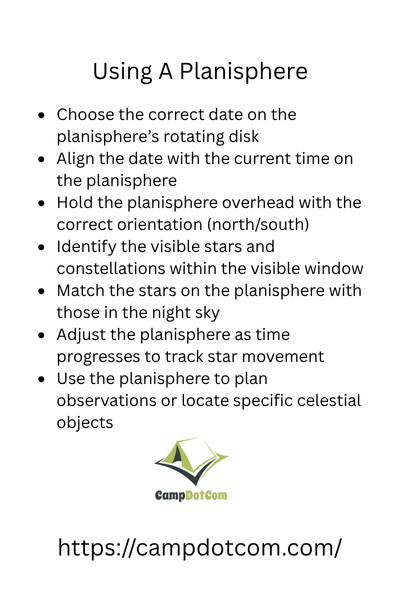Using a planisphere is one of those things that sounds a bit more complicated than it really is. Trust me, the first time I held one, I thought I’d accidentally picked up a tool from a pirate ship’s navigation kit. But once you get the hang of it, a planisphere becomes your best buddy for finding constellations without needing a degree in astronomy or a fancy telescope app.
Read More About Using a Planisphere

My First Planisphere Misadventure
I have a quick story to share. I bought my first planisphere on a whim from a science center gift shop. It looked like a spinning map of the stars, kind of like a flat plastic wheel that could guide you through the sky. I was so excited that I ran outside that night, held it up to the sky, and saw nothing that matched. I had completely set the wrong date and time. It was a true beginner mistake.
After a few trial-and-error evenings (and a hot cup of coffee to warm my frozen fingers), I finally got it right. That “aha!” moment when the Big Dipper popped into view exactly where the planisphere said it would? Pretty unforgettable.
As an Amazon Associate, I earn from qualifying purchases. Some of the links in this article are affiliate links. This means that, at zero cost to you, I will earn an affiliate commission if you click through the link and finalize a purchase.
More Things to Know About Using a Planisphere

So, What Is a Planisphere Anyway?
If you’re just dipping your toes into stargazing, using a planisphere can feel like magic. But really, it’s just a simple star chart with a rotating overlay that shows you what the night sky looks like at any given time and date.
You line up the current date with the current time, and boom, you have a snapshot of the stars overhead. No batteries, no updates, no screen glare. Just a good old fashioned guide to the cosmos.
Why Not Just Use an App?
Great question. Apps are cool, and I’ve tried a bunch of them. But there’s something about using a planisphere that feels more hands-on. You actually learn the sky instead of just pointing your phone up and letting it do all the work.
Plus, your phone battery won’t survive a long cold night of observing, especially if you’re out in the boonies. A planisphere? It’s weatherproof, screen-glare-proof, and doesn’t crash. Old-school for the win.
Tips for Using a Planisphere Without Losing Your Mind
When you’re using a planisphere for the first time, here are a few things that’ll save you some frustration (learned these the hard way):
1. Match the date and time exactly.
Seems obvious, right? But even being an hour off can make things wonky—especially if you’re dealing with daylight saving time.
2. Face the right direction.
This tripped me up at first. Hold the planisphere above your head with the correct direction (N, S, E, W) facing the same way you are. If you’re facing south, make sure “South” on the planisphere is pointing away from you.
3. Use a red flashlight.
It preserves your night vision while you’re reading your planisphere in the dark. Because stumbling around with a bright white light is basically a guarantee you won’t see any stars clearly for the next ten minutes.
Discovering the Sky Without the Stress
There’s a kind of peace that comes from stepping outside, letting your eyes adjust, and slowly finding your way around the night sky. Using a planisphere helps make that possible without overwhelming you. You don’t need to memorize star names or remember complicated coordinates. You just spin the dial, look up, and explore.
Once you’ve found your bearings with it a few times, it starts to feel like second nature. You’ll find yourself recognizing constellations you’d never noticed before. You might even impress your friends (or your date) by pointing out Saturn or the Summer Triangle with total confidence.
Using a Planisphere Makes Stargazing Way More Fun
If you’re even a little curious about the stars, I seriously recommend giving a planisphere a try. It’s cheap, it doesn’t break, and best of all—it teaches you how to actually see the sky.
When I head out to stargaze now, I still bring my planisphere along. It’s kind of like having an old friend with me. One that doesn’t talk much but always shows me something new. Whether you’re planning a camping trip, hosting a backyard star party, or just chilling solo under the stars, using a planisphere turns the sky into your own personal map.
And hey—if I can figure it out (with a few hilarious fails along the way), I promise you can too.
Navigate the Cosmos Using a Planisphere
Using a planisphere isn’t about being perfect or knowing everything about astronomy. It’s about curiosity, connection, and slowing down to appreciate what’s right above us every night. It’s your guide, your teacher, and sometimes even your icebreaker.
So grab one, spin that wheel, and let the stars lead the way. Who knows what you’ll discover up there?
